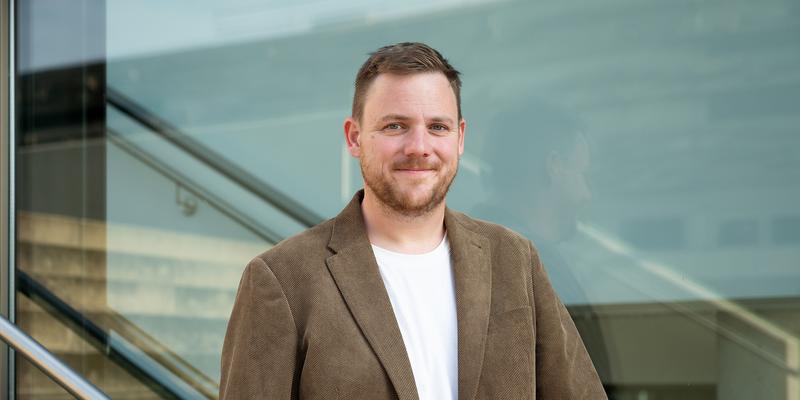Computer Science professor Florian Müller joined the LOEWE center emergenCITY as an associated Principal Investigator in mid-October. Since the beginning of September, the scientist has been Assistant Professor of Mobile Human-Computer Interaction in the Department of Computer Science at TU Darmstadt, where he heads the Urban Interaction department. He was previously a post-doctoral researcher at the Ludwig Maximilian University in Munich.
In his research, he focuses on the areas of Extended Reality (XR) and Artificial Intelligence (AI). His vision is to design a seamless mobile interaction in and with the physical world, in which digital information, AI and the environment merge into an extended reality. His focus is on body-centered interaction techniques that enable accurate and efficient interaction in mobile contexts. “I am sure that in ten years’ time, we will no longer want to interact with AI systems using text-based interfaces like ChatGPT,” explains the researcher. “Especially in dangerous situations, writing, reading and understanding texts takes too much time.”
AI-based interaction technologies: “Like a partner who looks out for me”
Complex AI applications such as foundation models, which link large amounts of data with one another in order to recognize correlations more quickly, are promising for the future. For example, they can evaluate a wide range of sensor information and help us to understand things that we cannot immediately grasp ourselves. They could also help us to focus on the essentials in overwhelming situations such as emergencies. “AI systems can become a partner that looks out for me, learns and supports me,” he says, explaining his connection to the topics at emergenCITY.
“At the moment, my research is very abstract. By working with emergenCITY, I hope to find out how interaction techniques could work in concrete situations, such as emergencies.”
He is also looking forward to future collaborations with scientists from various disciplines. Currently he is in the process of setting up his own group, the Urban Interaction Lab.



